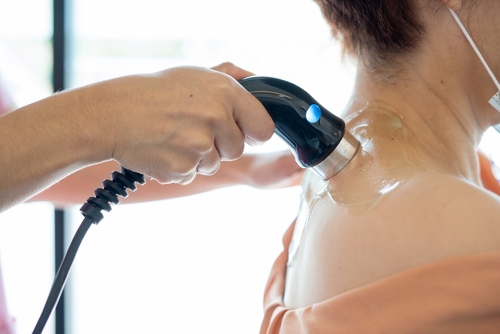
Do you have a hamstring, knee, or elbow injury? Your healthcare provider may recommend shockwave therapy. The technique can help treat painful or injured tissues. The high-powered sound waves are therapeutic and beneficial for orthopedic and rehabilitative care. It is also known as extracorporeal shockwave therapy.
Navigating Shockwave Therapy
Shockwave therapy is an effective technique to treat injuries. It involves using a handheld device to stimulate the nerves at the site of the injury. Doctors often use this therapy to boost healing by targeting the injured area.
It enhances the body’s ability to reduce pain and regenerate new tissue. The procedure is painless, with most people experiencing only mild discomfort. Health providers often prescribe it for sports injuries and other conditions. Such conditions include plantar fasciitis.
When to Get Shockwave Therapy
Healthcare providers can use shockwave therapy to:
Reduce pain by stimulating the nerve endings in the injured area.
Increase circulation around soft tissues.
Stimulate cells that help generate new connective and bone tissue.
Break down calcified deposits, such as kidney stones.
If you suffer from a musculoskeletal condition, your doctor may recommend shockwave therapy. It is a versatile treatment option that is safe and effective.
During Shockwave Therapy
The specialist locates the area requiring treatment before applying a gel. It helps the waves pass more efficiently on the site. The applicator is directed to the target area during therapy. The applicator is a device the specialist presses manually to apply the waves.
Therapy usually requires three to five sessions, three days apart. This depends on the patient’s condition and tolerance. Most patients notice improvements after the first session. You should seek to understand the treatment plan before you begin therapy.
After Shockwave Therapy
Shockwave therapy is an outpatient treatment that does not require anesthesia. Some patients experience mild discomfort after treatment. This discomfort subsides within a few hours. OTC pain relievers can help to manage the pain if necessary.
Applying an ice pack to the area can help to reduce inflammation and relieve discomfort. Doctors recommend avoiding strenuous physical exercise for 48 hours. Activities targeting the treatment area are especially harmful. Rest and elevation can help reduce swelling and speed up healing.
Benefits of Shockwave Therapy
Get this treatment if you have a nagging pain that does not respond to traditional treatment. It is a non-surgical treatment option, reducing the risks associated with invasive treatment.
The treatment helps to treat chronic inflammation and regenerate soft tissues. As a result, it produces long-term results. The technique also helps to:
Improved blood circulation
Boost collagen production
Remove trigger point problems
This therapy is proving to be very effective. Researchers are discovering new ways to relieve pain and regenerate tissue. Therapists may recommend physiotherapy or home exercises to complement shockwave treatment. Understanding the post-treatment experience will help ensure a comfortable healing process. Attending all follow-up appointments is essential for long-term results.
For more on navigating the shockwave therapy experience, visit San Ramon Chiropractic. Our office is in San Ramon, California. Call (925) 854-4200 to book an appointment today.







